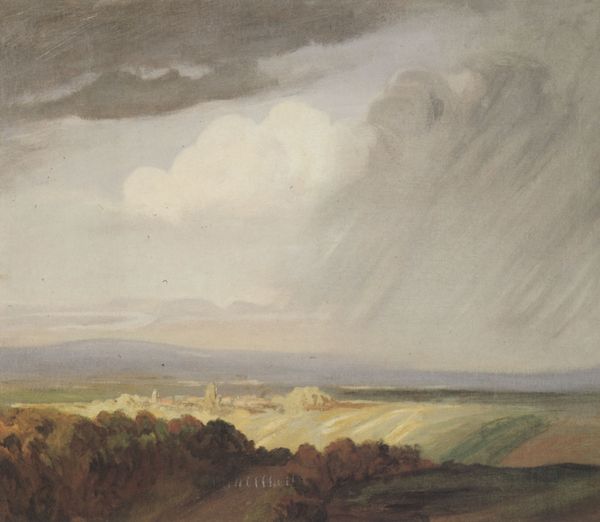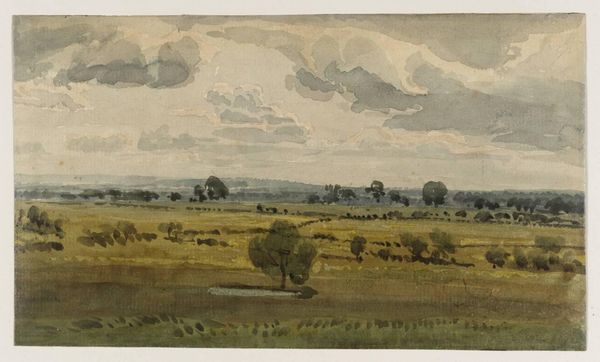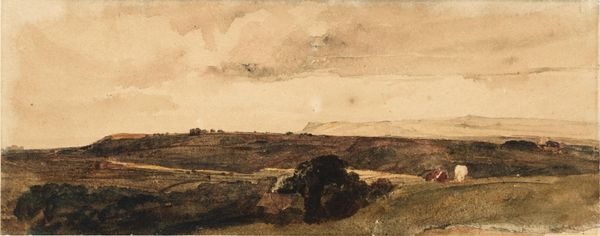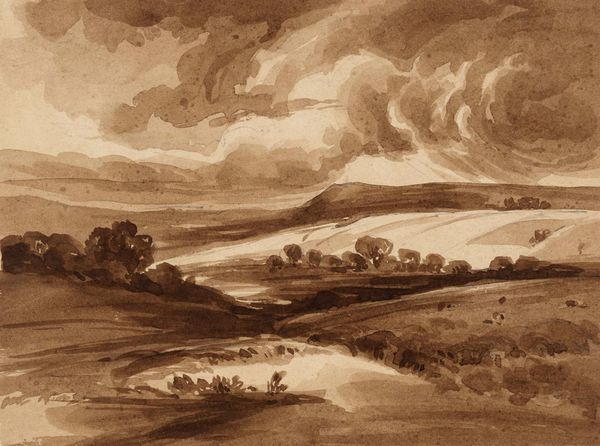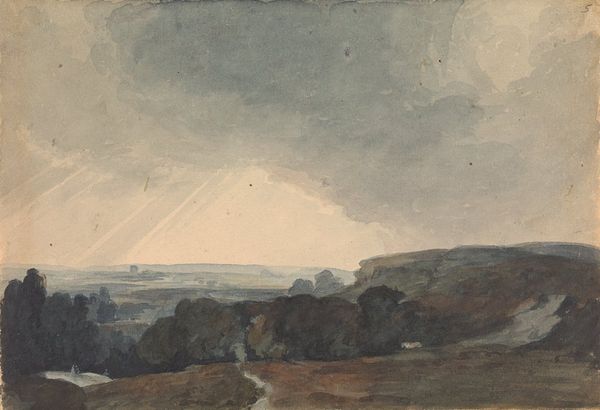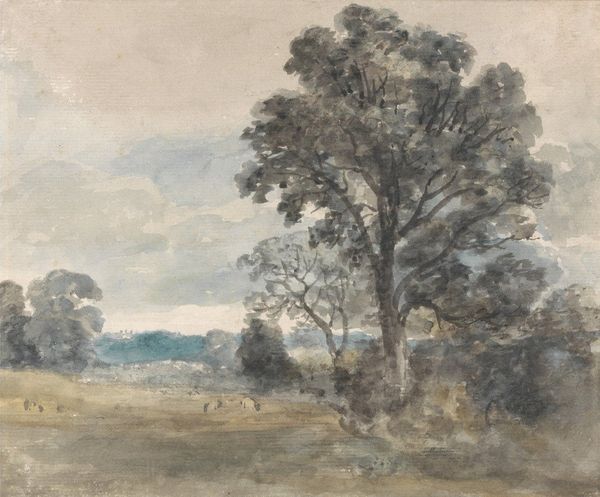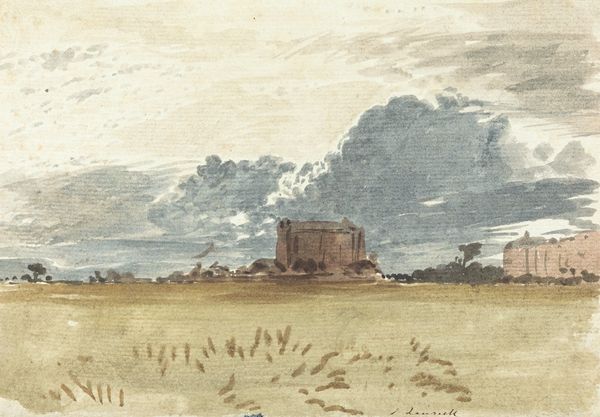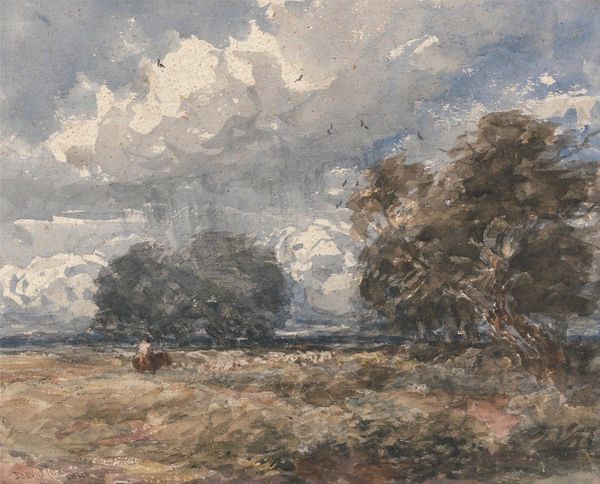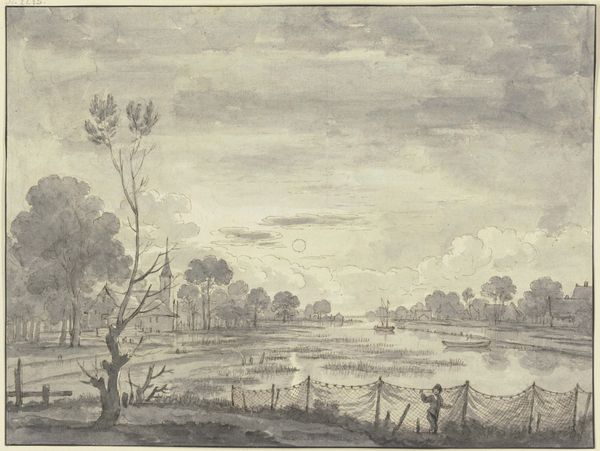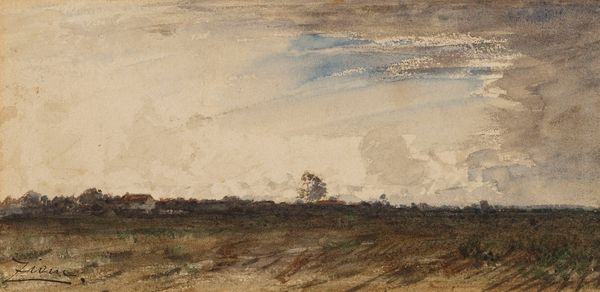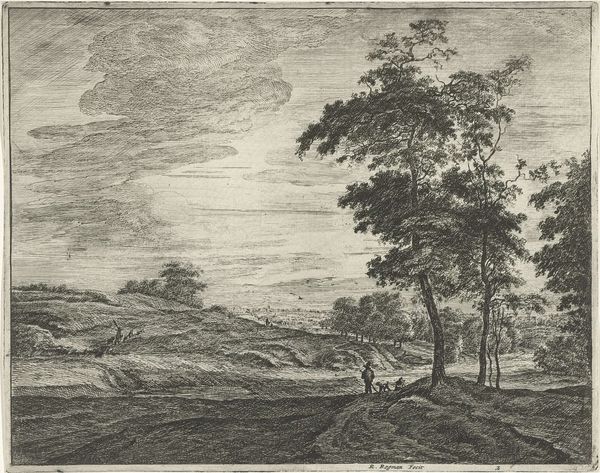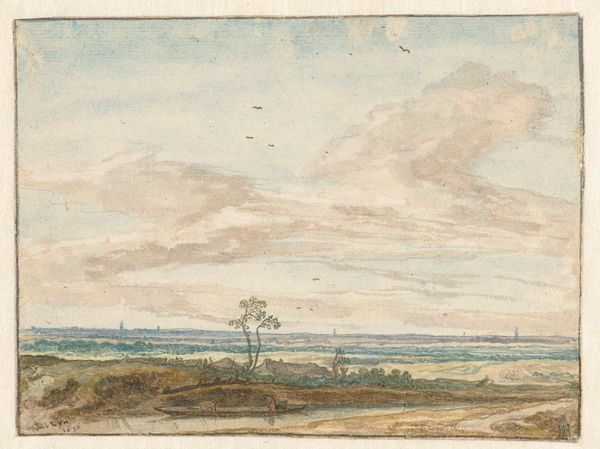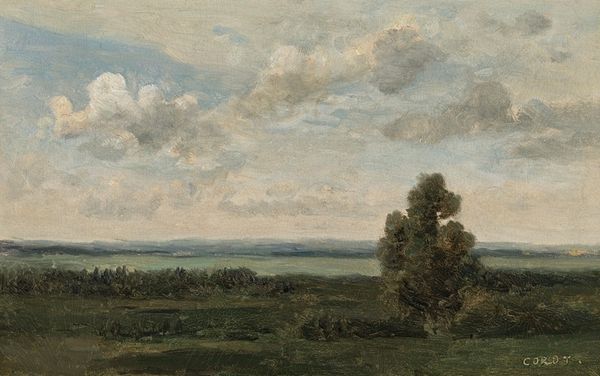
plein-air, watercolor
#
plein-air
#
landscape
#
watercolor
#
romanticism
#
watercolour illustration
#
watercolor
Copyright: Public Domain: Artvee
Curator: John Linnell, a figure strongly linked to William Blake and the Shoreham circle, crafted this plein-air watercolor landscape, "A Windy Day," around 1815. Editor: My immediate impression is of unsettled calm; the overcast sky seems heavy, almost pressing down on the diminutive landscape below. It's the visual equivalent of a sigh. Curator: The piece certainly possesses an atmospheric weight. Linnell’s employment of watercolor allows for a translucent layering effect. Look closely at how he uses tonal modulations of blue and grey to create both the depth of the clouds and their palpable volume. The horizontal bands divide space in a fairly classical arrangement of foreground, middle ground, and a slightly obscured horizon. Editor: How much of a conscious choice was it, though, to represent the English landscape during that time with such restraint? There's little here that speaks to industrial expansion or social upheaval; instead, there's a retreat into what appears almost bucolic, despite its brooding sky. Is this an intentional avoidance, a commentary through omission perhaps, highlighting the artist's view regarding social changes of the day? Curator: While direct socio-political commentary is understated, note that Linnell belonged to a circle that valued spiritual insight. The tumultuous sky could be viewed as reflecting the sublimity and sometimes overwhelming power of nature. Its placement dominates, literally eclipsing almost any sense of idealized pastoral tranquility and instead intimating a greater unseen, unstoppable force. Editor: That brings me to how art institutions can influence artmaking— Linnell later became more focused on portraits to satisfy market demand, moving away from these elemental expressions. Did such economic considerations shape his choice to make watercolor landscapes in the early stages of his career, understanding its accessibility both in production and potentially in sale? Or was watercolor always viewed just as a medium for preliminary sketches for future grand landscapes rendered in oil paint? Curator: Well, whatever factors drove Linnell, he manages to create an experience in his landscape with its remarkable compositional tension that holds the viewer's attention. Editor: Ultimately, his art asks us to contemplate not just what we see in the landscape, but also to confront the history of our present-day viewpoint of how the sublime makes an impact on both art and life.
Comments
No comments
Be the first to comment and join the conversation on the ultimate creative platform.
